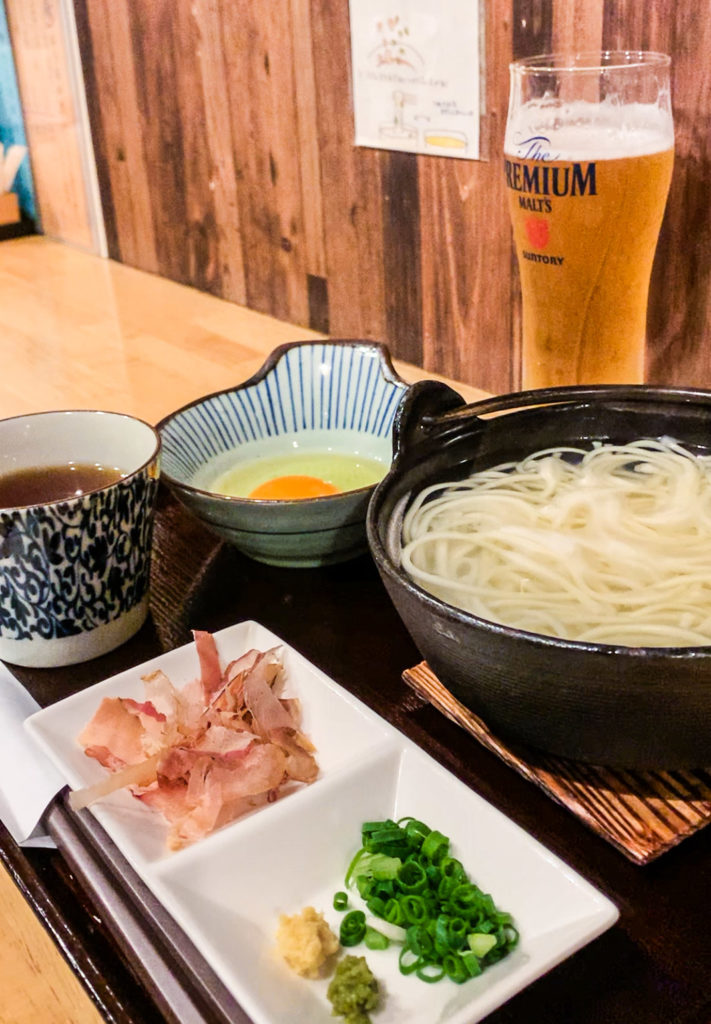
Japan is a haven for noodle lovers. With various types and even more regional variations, there’s something for everyone. Among the heavy hitters is udon, a thick, wheat noodle beloved by locals. In summer, it can be served chilled, but on a cold winter’s day, there’s nothing like leaning over a bowl of udon and inhaling the promising aromas of the broth. During a recent trip to Nagasaki, on Japan’s southern Kyushu Island, I learned of a local variation of the dish, called Goto Udon. This version originates from the Goto Islands, a chain of islands known for their connection to the hidden Christians. After reading about the history of the islands and the dish, I knew a visit was in order.
What makes Goto Udon different?
Udon is typically made with just three ingredients: wheat flour, salt and water. However, Goto Udon contains a secret fourth ingredient: Camellia oil from the local mountains. This indigenous favourite acts as a preservative and gives the noodles an extra silkiness when cooked.
But, the oil isn’t the only local ingredient to speak of. There’s also Goto flour, spring water and even salt farmed from the surrounding seas. With all ingredients locally sourced from the Goto Islands, it’s fair to say you’ll never try another noodle like it.
The methods used to produce Goto Udon further set it apart from other varieties. The dough is repeatedly hand-twisted and pulled in a traditional method called ‘te-yori’ which dates back over 1,000 years. This results in a uniquely soft yet springy texture that noodle lovers simply must try. While you can find the dried noodles in souvenir stores shops all over the islands, as well as in Nagasaki, the real fun is in eating them hot and fresh.
How is Goto Udon Served?
The most popular way to serve Goto Udon is Jigoku-daki style, also known as ‘hell cooking’, where the noodles are brought to the table swimming in boiling hot water. Though the noodles are delicious in their own right, a series of toppings and accompaniments help to elevate the dish completely.
Typically, you’ll be served a cup of hot broth, a raw egg, and some toppings like sliced negi (spring onions) and katsuobushi (dried fish flakes). It’s worth pointing out that the broth used, agodashi, is an important element in the dish, too. Popular in Kyushu, it’s made by simmering dried flying fish (ago) and has a refined flavour that goes perfectly with noodles.
How to eat it
When presented with a number of small dishes, it’s natural to feel a little confusion. What goes where, and in what order? Luckily, my restaurant had some hand-sketched instructions to guide my culinary journey.
The first step was to add soy sauce to the raw egg and mix them together. Next, tip the dry toppings into the cup of hot broth—the negi, katsuobushi and anything else you might have. Lastly, you have the choice of combining the egg mix and the broth or keeping them separate. Being a fan of sukiyaki, where you dip hot ingredients into a raw egg mix, I decided to keep mine separate.
I picked up a few noodles and dipped them into the egg mix, followed by the broth, and slurped them up. A heavenly combination. The egg does a fantastic job of toning down the salty flavours while creating a luxurious, rich mouthfeel. The noodles were as soft and chewy as their reputation would suggest. However, I couldn’t help but notice how silky and slippery they were, not to mention perfectly cylindrical. I later found out that this is thanks to a polishing step in the production process when their texture is made perfectly even. This texture along with the camellia oil meant the noodles in the ‘hell pot’ were tangle-tree and slurped up so quickly.
Where to eat it
Puritans will want to head straight to the source and try eating Goto Udon while they’re on the island chain. While the noodles are predominantly produced on Nakadori Island, they are served on all five islands. If your schedule doesn’t allow for a visit to the islands, Nagasaki is not too far away, so it’s a great low-food-mile dining option while staying in the city.
Post by Japan Journeys.